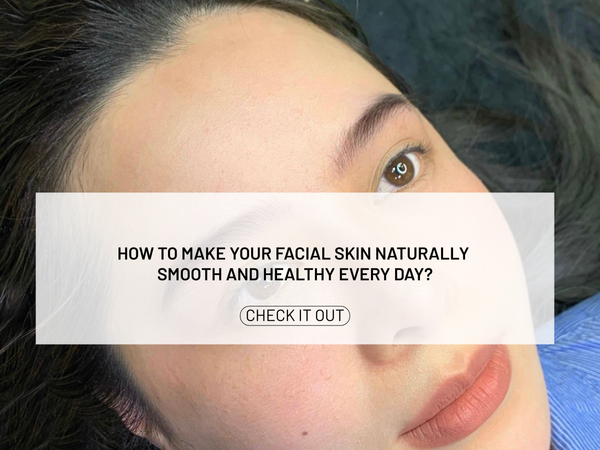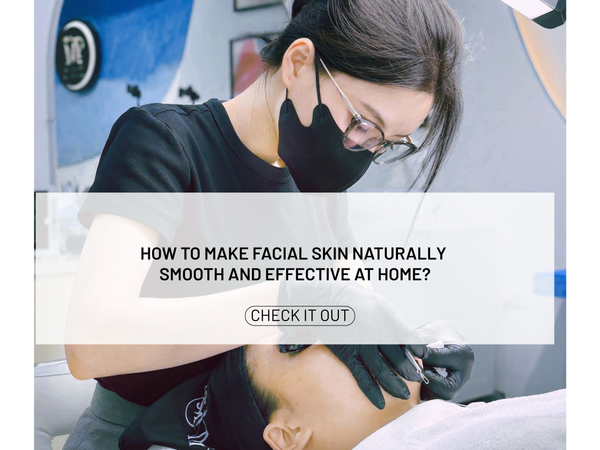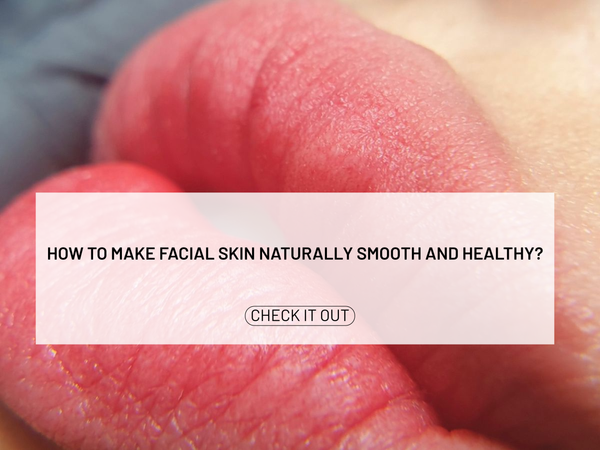Explore the Most Effective Sunscreens for Pigmented Skin in 2023
Sunblock is an essential part of skincare, especially for those with skin prone to pigmentation. Choosing and using the right sunblock will help protect the skin from the harmful effects of UV rays and prevent the condition of pigmentation from worsening. Below are important points to note when using sunblock for pigmented skin in 2023.
Key Takeaways
- Sunblock helps protect the skin from the harmful effects of UV rays, preventing pigmentation and aging.
- Choose physical sunblock with an SPF of 30 or higher for pigmented skin.
- Apply sunblock at least 15 minutes before going outside for maximum effectiveness.
- Reapply sunblock every 2 hours, especially when outdoors.
- Choose sunblock suitable for your skin type and condition.
Why Is It Necessary to Use Sunblock for Pigmented Skin?

The Harmful Effects of UV Rays on Pigmented Skin
We all know that UV rays from sunlight are one of the main causes of skin damage. UVA rays can penetrate deep into the skin, damaging cell structures and causing aging, while UVB rays cause sunburn and surface skin damage. Exposure to UV rays can worsen pigmentation.
The Benefits of Sunblock in Preventing Pigmentation
Using sunblock daily helps:
- Prevent pigmentation from worsening.
- Fade existing pigmentation spots.
- Protect the skin from other harmful effects of sunlight.
- Create a smooth makeup base.
Common Misconceptions About Sunblock
Many people still think that applying sunblock once in the morning is enough. In reality, sunblock needs to be reapplied every few hours to maintain effectiveness. We should also note that sunblock is necessary not only when going outside, but even indoors, as UV rays can penetrate glass and harm the skin.
Let’s take care of and protect our skin to always feel confident and radiant!
How to Choose the Right Sunblock for Pigmented Skin

Criteria for Choosing Sunblock
When choosing sunblock for pigmented skin, we need to pay attention to several important criteria to ensure the best protective effect:
- Suitable for skin type: Oily skin should choose gel or lotion forms, while dry skin needs cream forms that are rich in moisture. Sensitive skin should choose products free of fragrances or alcohol.
- Safe ingredients: Choose sunblock containing Zinc Oxide and Titanium Dioxide, as these are safe ingredients that cause minimal irritation to the skin.
- Water resistance: If you frequently engage in outdoor activities, choose sunblock with water resistance to continuously protect the skin.
Ingredients to Look for in Sunblock
We should look for the following ingredients in sunblock:
- SPF rating: Choose sunblock with SPF between 30-50 for effective skin protection.
- Antioxidants: Ingredients like Vitamin C and Niacinamide help soothe and protect the skin from environmental damage.
- UV filters: Choose products with strong UV filters to protect the skin from both UVA and UVB rays.
Recommended Sunblock Brands
We can refer to some reputable sunblock brands such as:
- La Roche-Posay: Known for products safe for sensitive skin.
- Heliocare: Products with proprietary technology that effectively protect the skin.
- Rejuvaskin: Physical sunblock with natural ingredients, safe for the skin.
Remember that choosing the right sunblock not only helps protect the skin but also supports more effective treatment of pigmentation. We need to pay attention to skin type and safe ingredients for healthy, beautiful skin.
How to Use Sunblock Correctly
When to Apply Sunblock
We should apply sunblock at least 15-30 minutes before going outside. This allows the sunblock time to absorb into the skin and take effect. Otherwise, the skin will not be adequately protected and will be more susceptible to UV damage.
How to Apply Sunblock for Maximum Effectiveness
To achieve optimal effectiveness, we need to:
- Cleanse the skin before applying sunblock. Use a gentle cleanser to remove dirt and excess oil.
- Use enough product: About 1-2 teaspoons for the face and more for the body.
- Apply evenly over the entire face and areas prone to damage such as the neck, ears, and hands.
Notes When Reapplying Sunblock Throughout the Day
We need to reapply sunblock every 2 hours, especially when engaging in outdoor activities or after swimming. This helps maintain the protective effect against UV damage. Don’t forget that sunblock not only protects the skin but also helps maintain moisture and prevent premature aging. Remember, applying sunblock correctly is very important to protect our skin!
The Best Sunblocks for Pigmented Skin in 2023

Physical Sunblock
Physical sunblock is the top choice for pigmented skin. We recommend choosing products with ingredients like Zinc Oxide or Titanium Dioxide. These products effectively protect the skin from UV rays without causing irritation. Some standout products include:
- Rejuvaskin Mineral Facial SPF 32: Contains natural ingredients that help protect the skin from UVA and UVB rays.
- La Roche-Posay Anthelios Shaka Fluid SPF 50+: Known for its excellent skin protection and non-greasy feel.
Chemical Sunblock
Chemical sunblock is also a good option for pigmented skin. They absorb quickly and do not leave a white residue on the skin. Some notable products are:
- Heliocare 360: This product helps control pigmentation and protects the skin from blue light.
- Martiderm Pigment Zero DSP SPF50+ Cream: Helps brighten the skin and effectively prevent pigmentation.
Combination Sunblock
Combination sunblock is the perfect choice for those who want to take advantage of both types of sunblock. We recommend trying:
- Fixderma Shadow SPF 30+: Water-resistant and protects the skin from UV damage.
- Caryophy Smart Sunscreen Tone Up SPF50+/PA+++: Helps brighten the skin tone and provides effective protection.
Let’s explore 8 pigmentation creams that deliver outstanding results for your skin to make the best choice for your skin!
Common Mistakes When Using Sunblock
Not Applying Enough Product
One of the biggest mistakes many people make is not applying enough sunblock. To effectively protect the skin, we need to:
- Use about 2mg/cm² of skin for the face.
- About 30ml for the entire body.
- Ensure even application and not miss areas like the ears, neck, and the back of the hands.
Not Reapplying Sunblock After a While
Many people think that applying sunblock once in the morning is enough. However, sunblock needs to be reapplied after:
- 2 hours of sun exposure.
- After swimming or sweating.
- Even indoors, UV rays can penetrate glass.
Using Sunblock Not Suitable for Skin Type
Choosing sunblock that is not suitable for skin type is also a common mistake. We need to:
- Choose gel sunblock for oily skin.
- Use cream sunblock for dry skin.
- Avoid products containing fragrances or alcohol if you have sensitive skin.
Remember, using sunblock correctly not only helps protect the skin but also maintains a youthful appearance and prevents aging. We need to learn 5 ways to use sunblock to optimally protect our skin with mint!
Notes When Combining Sunblock with Other Products

Order of Using Skincare Products
When we care for our skin, the order of using products is very important. The correct order will help the products achieve maximum effectiveness:
- Moisturizer: Provides moisture to the skin, keeping it soft and healthy.
- Sunblock: Protects the skin from the harmful effects of UV rays, especially when going outside.
- Foundation: Helps even out skin tone and cover imperfections.
How to Combine Sunblock with Makeup
When applying makeup, we need to be careful so that sunblock is not affected:
- Apply sunblock at least 15-30 minutes before makeup to allow it to absorb into the skin.
- Use liquid or gel sunblock for easy blending with makeup.
- If needed, you can use spray sunblock to reapply without disturbing the makeup.
Ingredients to Avoid Combining with Sunblock
Some ingredients can reduce the effectiveness of sunblock:
- Retinol: Can make the skin more sensitive to sunlight.
- AHA/BHA: These ingredients can make the skin more vulnerable to sunlight.
- Vitamin C: Should be used at night to avoid reducing the effectiveness of sunblock.
Let’s remember that proper combination will help protect the skin most effectively!
When you use sunblock, remember that not all products can combine well with each other. To achieve optimal effectiveness, research the products you are using. Don’t forget to visit our website for more great skincare tips!
Conclusion
Sunblock is an essential part of skincare, especially for those with skin prone to pigmentation. Choosing the right type of sunblock will help protect the skin from the harmful effects of UV rays while preventing the condition of pigmentation from worsening. Remember, using sunblock daily, even when it’s not sunny, is very important. Don’t forget to reapply every 2 hours, especially when you are outdoors. This way, you will keep your skin healthy and radiant.
Frequently Asked Questions
Why is it necessary to use sunblock daily?
Sunblock helps protect the skin from the harmful effects of UV rays, preventing pigmentation and premature aging.
How do physical and chemical sunblocks differ?
Physical sunblock creates a protective layer on the skin, while chemical sunblock absorbs UV rays and converts them into heat.
How often should sunblock be applied in a day?
Sunblock should be reapplied every 2 hours, especially when outdoors or after swimming.
Is sunblock necessary when indoors?
Yes, because UV rays can penetrate glass, so sunblock should still be applied even when indoors.
How to choose the right sunblock for pigmented skin?
Choose physical sunblock with an SPF of 30 or higher and avoid products containing fragrances.
Should products be tested before use?
Yes, you should test on a small area of skin to ensure it does not cause irritation.



